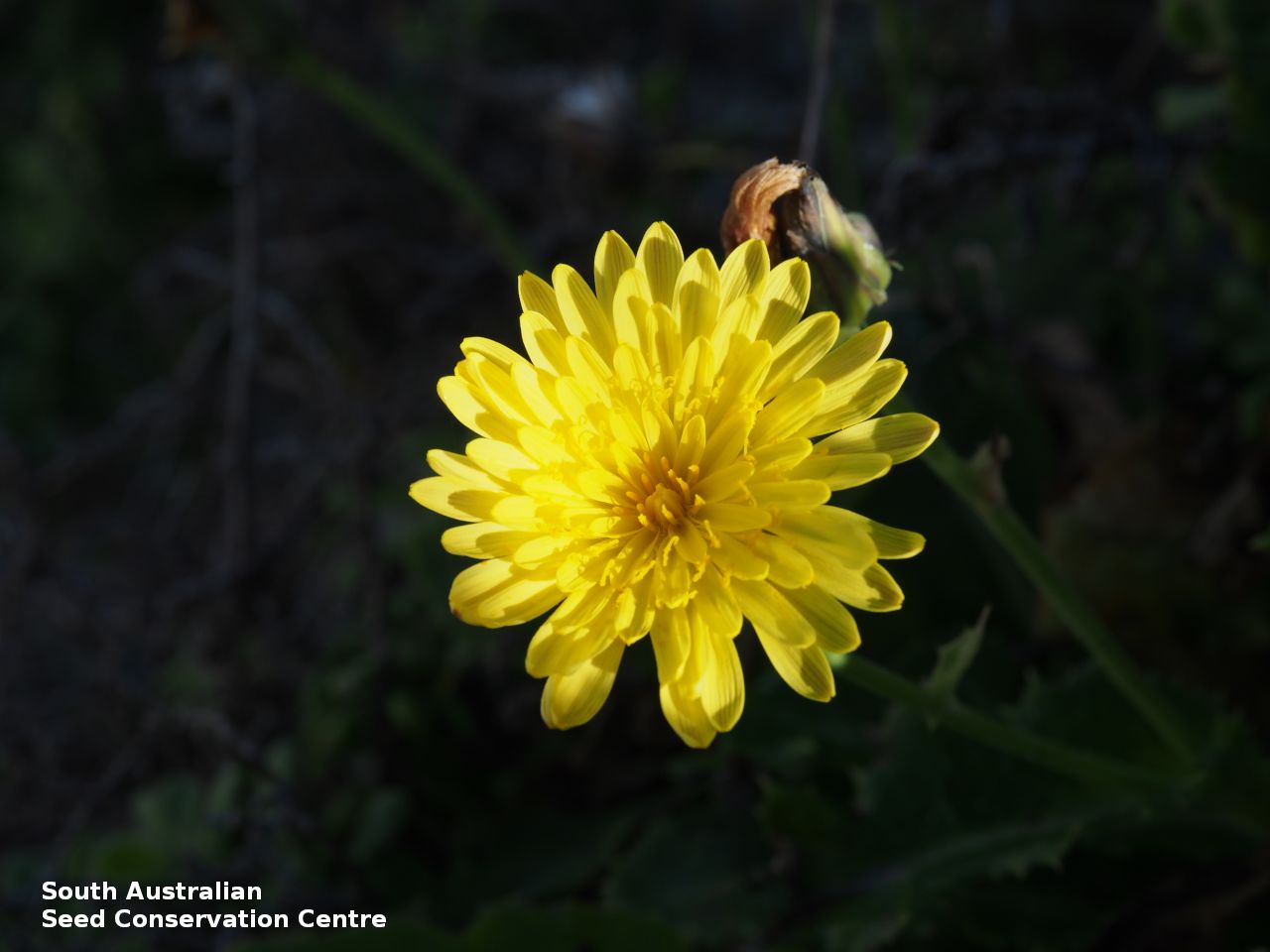

















Botanical art
Prior names
Actites megalocarpa, orth.var.
Embergeria megalocarpa
Sonchus asper var. littoralis
Sonchus asper var. megalocarpus
Sonchus megalocarpus
Common names
Dune Thistle
Coast Sow-thistle
Etymology
Actites from the Greek 'aktites' meaning coast dweller, referring to the habitat of the species. Megalocarpa from the Greek 'megas' meaning large and 'carpos' meaning fruit, referring to the species' large heads.
Distribution and status
Found along the coast in South Australia, on coastal dunes and cliffs. Also found in Western Australia, Queensland, New South Wales, Victoria and Tasmania. Native. Common in South Australia. Common in the other States.
Herbarium regions: Eyre Peninsula, Yorke Peninsula, Southern Lofty, Kangaroo Island, South Eastern, Green Adelaide
NRM regions: Adelaide and Mount Lofty Ranges, Eyre Peninsula, Kangaroo Island, Northern and Yorke, South East
AVH map: SA distribution map (external link)
Plant description
Fleshy perennial herb to 40 cm high, forming large clumps. Leaves oblanceolate to elliptic or lanceolate to 17 cm long and 4.5 cm wide, either tapering at base or cordate and sessile, margins sinuate-toothed. Large flower heads to 2 cm diameter, yellow sometimes pale-purple towards base. Flowering between September and February. Fruits are large fluffy daisy-heads. Seeds are long brown, semi-flat ovoid to 8 mm long and 2 mm wide, with thin wings on either side. Seed embryo type is spatulate fully developed.
Seed collection and propagation
Collect seeds between November and March. Collect heads that are brown with fluffy white pappus and easily removed with your fingers. If only seeds collected, no further cleaning is required. If whole heads are collected, then place the heads in a tray for a week to dry. Then remove the seeds from the head with your fingers. They should come off easily. Store the seeds with a desiccant such as dried silica beads or dry rice, in an air tight container in a cool and dry place. Seed viability is usually high. Seeds are non-dormant, viable seed should germinate readily.
| Location | No. of seeds (weight grams) | Number of plants | Date collected | Collection number Collection location | Date stored | % Viability | Storage temperature |
|---|---|---|---|---|---|---|---|
| MSB | 3,900 (5.13 g) | 50+ | 11-Jan-2007 | TST158 South Eastern | |||
| BGA | 1,500 (1.47 g) | 10 | 22-Nov-2007 | RJB76077 South Eastern | 19-Sep-2008 | 80% | -18°C |
Number of plants: This is the number of plants from which the seeds were collected.
Collection location: The Herbarium of South Australia's region name.
% Viability: Percentage of filled healthy seeds determined by a cut test or x-ray.